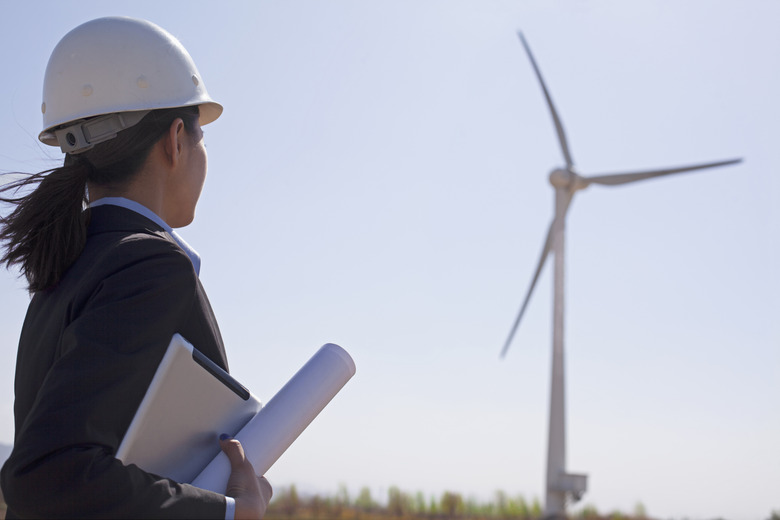How Do Wind Turbines Work?
Ever since farmers across the country began using wind turbines to pump water in the 1800s, Americans have understood the benefits of wind power. The energy crises of the 1970s underlined the importance of wind power as a cheap, clean and renewable source of energy, and the Energy Policy Act of 1992 took steps to boost its development. Wind turbines aren't difficult to understand, and they're becoming increasingly efficient, powerful and ubiquitous.
Generating Electricity by Induction
Generating Electricity by Induction
The principle behind power generation in a wind turbine is basically the same as that behind hydroelectric, fossil fuel and even nuclear energy. The heart of the turbine is a magnetic induction coil that generates alternating current as a magnetized rotor spins around or inside a stationary stator. In the case of a wind turbine, it's the wind that supplies the energy to spin the rotor. The electricity the generator produces travels along transmission lines to be either directly used by the owner of the turbine, or to enter a grid for distribution to utility customers.
Components of a Turbine
Components of a Turbine
The main body of a wind turbine is the nacelle, which houses the generator as well as a series of drive gears. The blades are attached to the shaft, and the nacelle sits atop a tower that is as tall as possible to allow the blades to catch the maximum amount of wind. The nacelle also houses a controller that receives data from an anemometer, which measures wind speed, and a vane, which measures wind direction. The controller can start and stop the turbine as well as make adjustments to compensate for wind speed. The nacelle also houses a mechanical brake that locks the blades and a pitch drive that adjusts the blade angle to minimize lift in high winds.
The Function of the Gears
The Function of the Gears
When the wind blows, the controller orients the nacelle to face it, and the specially shaped blades begin slowly rotating. It's hard to believe while observing from the ground that such a slow rotation — approximately 20 rpm on industrial units — can produce electricity, but the gears inside the nacelle step up the rotation speed of the generator rotor shaft to between 1,200 and 1,800 rpm, which is sufficient to generate electricity. It isn't important for the blades to rotate quickly — in fact, they pose a danger to birds and people on the ground if they rotate too fast. The blades are finely balanced to generate power even in light winds, and the pitch drive and controller slow them down when the wind is strong.
Evolving Designs
Evolving Designs
Smaller residential wind turbines often incorporate vertical-axis blade systems — these convert wind energy into electricity by the same principle as horizontal-axis turbines, and they can be small enough to mount on the roof of a house. Refinement of blade design to better catch the wind is an important on-going development for both industrial and residential horizontal-axis turbines. In addition, manufacturers are producing longer blades and higher towers so turbines can take advantage of faster winds at higher altitudes. Most turbines now include vibration dampeners to reduce noise and active pitch controls to ensure turbines can continue to rotate safely and generate electricity even in high winds.
Cite This Article
MLA
Deziel, Chris. "How Do Wind Turbines Work?" sciencing.com, https://www.sciencing.com/wind-turbines-work-4570097/. 24 April 2017.
APA
Deziel, Chris. (2017, April 24). How Do Wind Turbines Work?. sciencing.com. Retrieved from https://www.sciencing.com/wind-turbines-work-4570097/
Chicago
Deziel, Chris. How Do Wind Turbines Work? last modified March 24, 2022. https://www.sciencing.com/wind-turbines-work-4570097/
